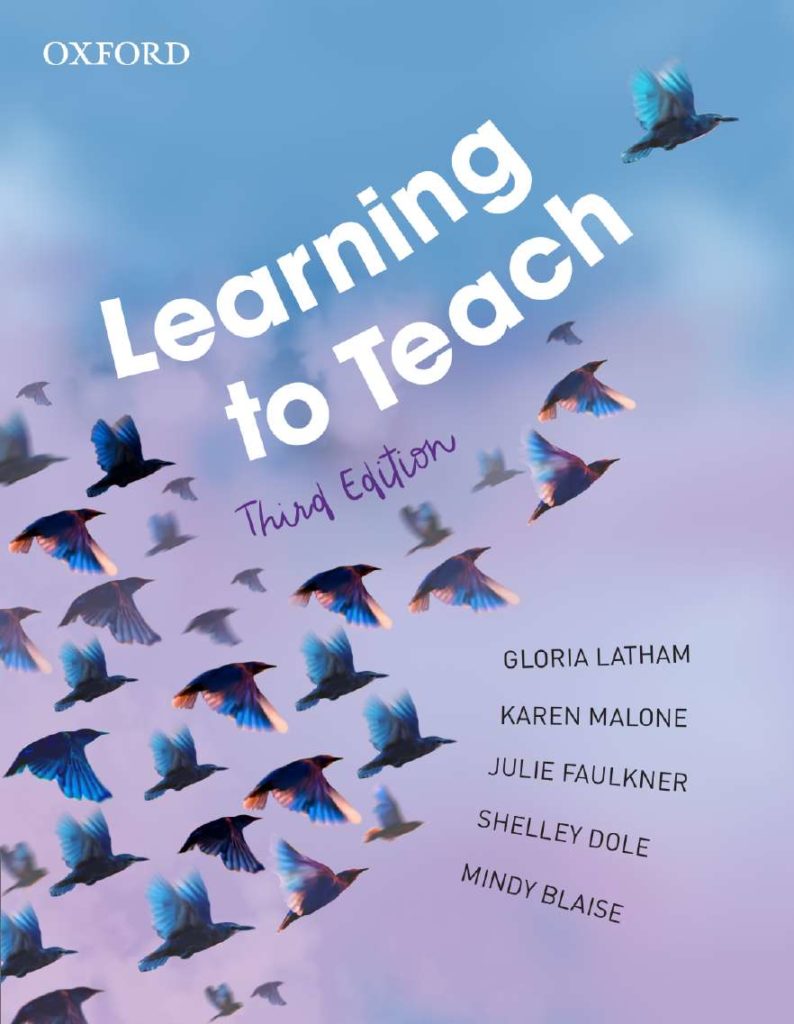Written by Gloria Latham, Honorary Senior Lecturer at the University of Sydney

When we wrote the 3rd edition of Learning to Teach the world had changed dramatically from the world we left in 2011, the date of our last edition. In 2011, all the authors lived in the same city and worked at the same university. Our extended, often daily conversations were face to face. While we worked in different sectors and disciplines, the author team was united in beliefs about teaching and learning and united in the urgent need for education to be reimagined for these vastly changing times. It was an exciting time to be educators and we were filled with optimism and possibilities.
In 2019, the author team continued to have extended conversations but then it was over email and ZOOM meetings as we were working at 4 different universities in 3 different states. We lamented the fact that education had not been reimagined in the interim from edition 2 to edition 3. There had only been some tinkering around the edges of educational change. Students were still being prepared for a world that no longer exists.
Planning for the new edition involved shaping numerous provocations from the concepts we wanted to communicate and building anchors that supported them. We created a multi-voiced, multi-imaged text so that preservice teachers could better understand the investment of education from differing perspectives: the government, university lecturers, principals, teachers, students, family members and the wider community.
Three pre-service teacher narratives with competing mindsets and competing expectations of what it means to be a teacher were created. Their narratives unfold, and their views expand throughout their teacher education program. Fiction afforded us the opportunity to go deeper into humanity and more fully relate to the reader. We repurposed the virtual school, Lathner Primary, a school we had created prior to the first edition. It is a school where the change we are advocating was already underway. We wanted to counter the preservice teachers’ experience in schools where far too often they have placements in traditional settings like those they had experienced as students and their initial beliefs are confirmed. The 3 fictional preservice teachers and the reader have a placement at this virtual school. As well, one of these preservice teachers has a rural placement where we focus on wellbeing and the nature of school as a place where teachers and students and the wider community work together.
We also take the reader into university classes. We fashioned creative and critical site tasks and university assessments that were designed to challenge the norms of schooling and that focus greater attention on the dispositions of students and their teachers who are required to live and work symbiotically (dependent on the complex evolving system in a world we are all a part of). These dispositions such as life-long learning, ethical and emotional intelligence, collaboration, resilience, curiosity and critical thinking were developed in the text to break down prevailing binaries and present pre-service teachers with added complexity. It was our desire to disrupt the ingrained notions of teachers, students and schooling. We wanted to loosen the grip and break the long- outmoded factory model.
We premised the 3rd edition of the text around Gert Biesta’s Humanist move to rediscover and re-ignite teaching; to rediscover the fundamental purpose of education and our place in the world. As well, we looked to Posthumanism, where we reconfigure our relationship with the world and with other species.
We argue for Will Richardson’s steep unlearning curve, Megan Boler’s Pedagogy of Discomfort, premised on the claim that experiences of discomfort can be used to ‘invite students and educators to examine how our modes of seeing have been shaped specifically by the dominant culture of the historical moment’ (1999:179). And Donna Haraway’s, need for us to stay with the trouble. While uncomfortable, we know that these positions drive the learning that matters.
Of course, we were not to know at the time of completing the 3rd edition of Learning to Teach, that COVID 19 would unwittingly propel us (students, principals, teachers, parents) ten years into the future. However, it is not necessarily the future that was desired or intended. We continue to argue, that it is the educational change we need. Finally, we are starting to look at the totality of individual learners rather than solely at individuals’ test scores. Universities are rethinking their acceptance criteria. Teachers are re-evaluating their roles and teaching practices and NAPLAN is under review.
COVID 19 has created disruption in teaching and learning but it is also fostering new possibilities. Yet this is a cautionary tale. When isolation ends, and we find a prevention for the virus, what will occur?
Maslow says: In any movement, we have two options: to step forward into growth or to step back into safety. What turn must we take?

Gloria Latham
Gloria Latham is an Honorary Senior Lecturer at the University of Sydney. She taught at Coburg Teachers’ College and RMIT University for thirty years. Gloria also co-edits the journal Literacy Learning: The Middle Years and has created a virtual school called Lathner Primary to be used by students in Teacher Education.
Hear more from the authors of Learning to Teach by listening to their podcast episode on adapting learning to ever-changing and ever-evolving landscapes.
Leave a Reply